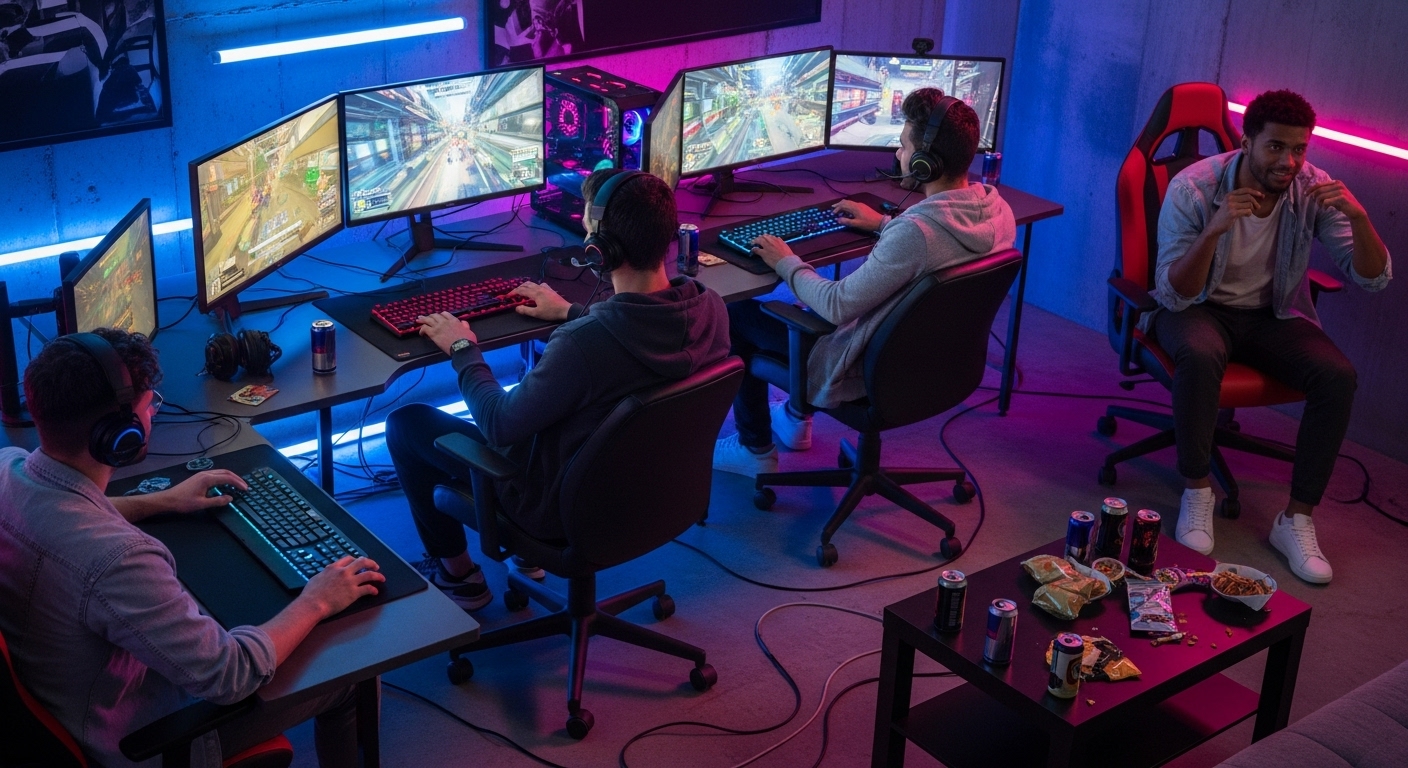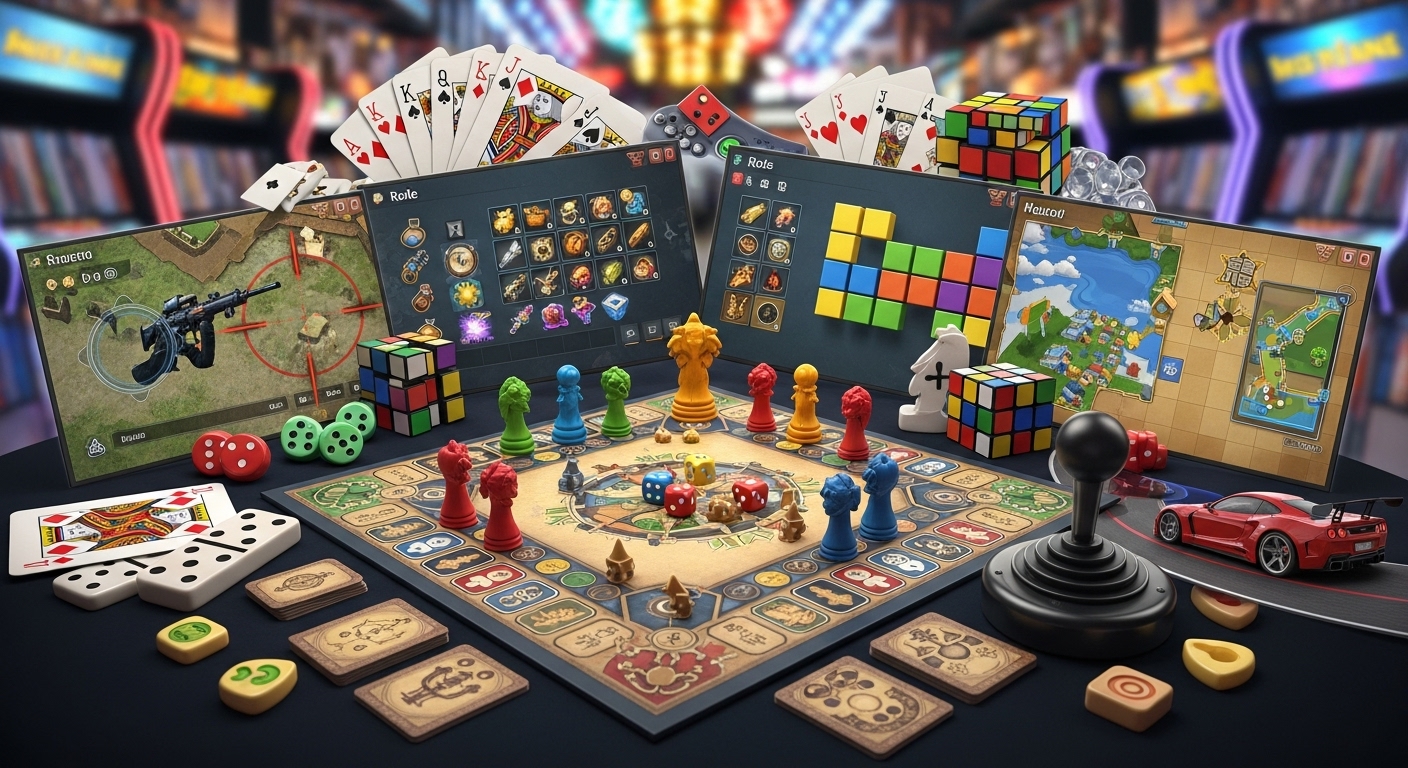Gaming has grown from a niche hobby into one of the most powerful forms of entertainment in the world. What once began as simple pixelated fun on arcade machines has become a multibillion-dollar industry influencing art, technology, and global culture. The world of gaming today is more immersive, creative, and socially connected than ever before. It reflects human imagination, storytelling, and our constant pursuit of innovation. This blog explores the rich history of gaming, the technology driving it forward, its cultural influence, and where it’s headed in the future.
The Origins of Gaming
The story of gaming began in the mid-20th century, when technology started to evolve and computer scientists began experimenting with interactive programs. The earliest form of gaming came in the form of simple digital experiments like “Tennis for Two” and “Spacewar!” These primitive yet groundbreaking creations laid the foundation for interactive entertainment.
In the 1970s, arcade gaming emerged and began captivating the public’s attention. Games like “Pong,” “Space Invaders,” and “Pac-Man” transformed entertainment, becoming cultural icons of their time. The arcade era brought competition, excitement, and social interaction, as players gathered to test their skills and set high scores. The simplicity of gameplay combined with addictive mechanics made arcade games a phenomenon that shaped the first generation of gamers.
The Rise of Home Consoles
As technology advanced, the dream of bringing the arcade experience into homes became a reality. The late 1970s and early 1980s saw the introduction of home consoles such as the Atari 2600, Nintendo Entertainment System, and Sega Genesis. These devices changed how people consumed entertainment, making gaming a family and social activity.
With consoles, players could experience longer adventures, multiple levels, and story-driven gameplay. Characters like Mario, Link, and Sonic became household names and symbols of a new cultural era. Gaming moved from being just an activity to an immersive world of imagination and creativity.
The 1980s and 1990s were defined by intense competition between gaming companies. The “console wars” between Nintendo, Sega, and later Sony and Microsoft fueled rapid innovation. Each generation of consoles introduced better graphics, deeper gameplay, and more complex storytelling. The home console revolution marked the first step toward gaming becoming a global phenomenon.
The Emergence of PC Gaming
While consoles dominated homes, personal computers were creating a different kind of gaming experience. PC gaming gave players the freedom to customize hardware, enhance graphics, and explore a variety of genres. It became the platform for experimentation, innovation, and creativity.
In the 1990s, PC gaming introduced genres that would later dominate the gaming landscape, including real-time strategy, simulation, and first-person shooters. Titles like “Doom,” “Warcraft,” and “The Sims” revolutionized how games were played and developed. PCs also allowed for user-generated content, leading to the birth of modding communities where players could create their own maps, characters, and even new games.
The flexibility of PC gaming attracted both casual and hardcore players. It also paved the way for online gaming, as early internet connections allowed players to compete or cooperate with others across the world.
The Shift to 3D and Immersive Worlds
The move from 2D to 3D graphics in the mid-1990s was one of the most significant milestones in gaming history. This transformation gave developers the ability to build more realistic worlds, detailed characters, and cinematic experiences.
Games like “Super Mario 64,” “Tomb Raider,” and “Final Fantasy VII” showcased how powerful 3D graphics could be in storytelling and gameplay. The technology of this era allowed for greater player freedom, with open-world designs and exploration-based gameplay becoming increasingly popular.
This period also saw the rise of cinematic storytelling in games. Developers started using cutscenes, voice acting, and orchestral soundtracks to enhance emotional depth. The idea that games could tell stories as powerfully as movies began to take root.
The Online Revolution
The arrival of the internet changed gaming forever. Online gaming connected players from all over the world, creating communities, friendships, and rivalries that transcended geography. In the early 2000s, games like “Counter-Strike,” “World of Warcraft,” and “Halo 2” became pioneers of online multiplayer experiences.
Online gaming introduced the concept of virtual worlds that never slept. Players could log in at any time and find others to play with. It gave rise to massively multiplayer online role-playing games (MMORPGs), where thousands of players interacted in persistent virtual worlds.
This connectivity also introduced new business models. Game developers began creating downloadable content, updates, and expansions that extended the life of games. The gaming industry was no longer static—it was evolving continuously through online updates and community engagement.
The Birth of Esports
As online gaming grew, so did the competitive spirit among players. Esports emerged as a formalized version of competitive gaming, complete with professional players, teams, sponsors, and large-scale tournaments.
Games like “League of Legends,” “Dota 2,” and “Counter-Strike: Global Offensive” became the foundation of the esports industry. These games required strategy, teamwork, and precision, transforming gaming into a global spectator sport.
Esports events began filling stadiums, with millions of viewers watching live or through streaming platforms. Professional players trained like athletes, with strict practice schedules, team strategies, and even personal coaches. Esports has since become a billion-dollar industry, showcasing how gaming can rival traditional sports in viewership, influence, and entertainment value.
The Rise of Mobile Gaming
The introduction of smartphones brought gaming to the fingertips of billions. Mobile gaming became the most accessible form of interactive entertainment, reaching audiences that had never considered themselves gamers before.
Simple yet engaging titles like “Angry Birds,” “Candy Crush,” and “Clash of Clans” turned mobile gaming into a global phenomenon. The ability to play anytime and anywhere made gaming a part of everyday life.
However, mobile gaming quickly evolved beyond casual play. With powerful mobile hardware and cloud gaming integration, competitive titles like “PUBG Mobile,” “Call of Duty Mobile,” and “Genshin Impact” brought console-quality experiences to handheld devices. Mobile esports even became a growing industry of its own, further expanding the boundaries of gaming.
Storytelling in Modern Gaming
Modern gaming has elevated storytelling to an art form. Today’s games are capable of delivering emotional depth, moral complexity, and cinematic experiences rivaling Hollywood films. Players are not just spectators; they become active participants in the story.
Games like “The Last of Us,” “Red Dead Redemption 2,” and “God of War” have demonstrated the emotional potential of gaming. They explore complex human themes such as loss, survival, and redemption. Player choice has also become a key part of storytelling, allowing gamers to shape their own narratives and influence outcomes.
This shift toward narrative-driven games has blurred the line between film and interactive media. Games are now respected as a legitimate storytelling medium capable of provoking thought and emotion.
The Impact of Technology on Gaming
The evolution of technology has been the driving force behind gaming’s growth. Each decade introduces new hardware and software innovations that redefine what is possible.
Graphics technology has advanced to the point where games now feature near-photorealistic visuals. Ray tracing and high dynamic range lighting make environments look incredibly lifelike. Artificial intelligence enhances both enemy behavior and player interactions, creating dynamic and adaptive worlds.
Cloud gaming is another technological leap, allowing players to stream games without needing expensive hardware. Virtual reality (VR) and augmented reality (AR) have also begun transforming the way we experience games, creating fully immersive worlds that engage multiple senses.
Gaming hardware continues to evolve rapidly, from high-performance consoles and gaming PCs to portable systems that deliver console-quality performance. These advancements not only improve gameplay but also expand accessibility for all types of players.
Gaming as a Cultural Force
Gaming is now one of the most influential cultural forces in the world. It transcends age, language, and geography. Music, fashion, and film are all heavily inspired by gaming culture. Iconic game characters and aesthetics have become symbols of modern pop culture.
Gaming communities are among the most active and creative groups online. Players collaborate on fan art, music remixes, mods, and even original games. Streaming platforms have turned gaming into a form of live entertainment where personalities share gameplay with millions of followers.
Moreover, gaming has become a medium for social awareness and education. Games are now used to teach history, improve problem-solving skills, and even raise awareness of global issues. They have become tools for empathy and understanding, capable of sparking real-world change.
The Economics of Gaming
The gaming industry is now worth hundreds of billions of dollars annually, making it one of the most profitable entertainment sectors in the world. Revenue streams come from game sales, digital downloads, in-game purchases, and merchandise.
The rise of indie games has added diversity to the market. Independent developers create unique, innovative titles that often push creative boundaries. Many indie games achieve critical acclaim and commercial success, proving that creativity can compete with big-budget productions.
Gaming has also created new professions. Streamers, content creators, game developers, designers, and esports athletes all form part of a vast digital economy. Gaming conventions, tournaments, and online platforms contribute to a thriving ecosystem that supports millions of people worldwide.
The Future of Gaming
The future of gaming is filled with limitless potential. Technologies such as artificial intelligence, virtual reality, and the metaverse are reshaping how people play and interact. The concept of interconnected virtual worlds—where users can play, socialize, and even work—is becoming a reality.
AI will play a major role in creating more dynamic, personalized experiences. Games will adapt to individual player behavior, offering unique challenges and stories for every user. Cloud gaming will make high-end titles accessible to anyone with an internet connection, removing hardware barriers.
Additionally, sustainability and inclusivity are becoming priorities for developers. The future of gaming will focus not only on technological advancement but also on ethical and social responsibility. Gaming will continue to evolve as a force for creativity, connection, and innovation.
Conclusion
Gaming is no longer just a hobby—it is a cornerstone of global entertainment, technology, and culture. It has grown from simple pixels to vast digital worlds filled with art, emotion, and imagination. The journey of gaming reflects human progress itself: our desire to explore, create, and connect.
From arcades to consoles, PCs to mobile devices, and now into the virtual realms of tomorrow, gaming continues to shape the way we interact with technology and each other. It brings people together across borders, languages, and generations.
As the boundaries between reality and virtual worlds continue to blur, gaming will remain a driving force of innovation, storytelling, and human expression. It is a testament to how creativity and technology, when combined, can transform the world in ways once thought impossible.
Gaming’s story is far from over—it is an ever-expanding universe waiting for the next player to press start.




